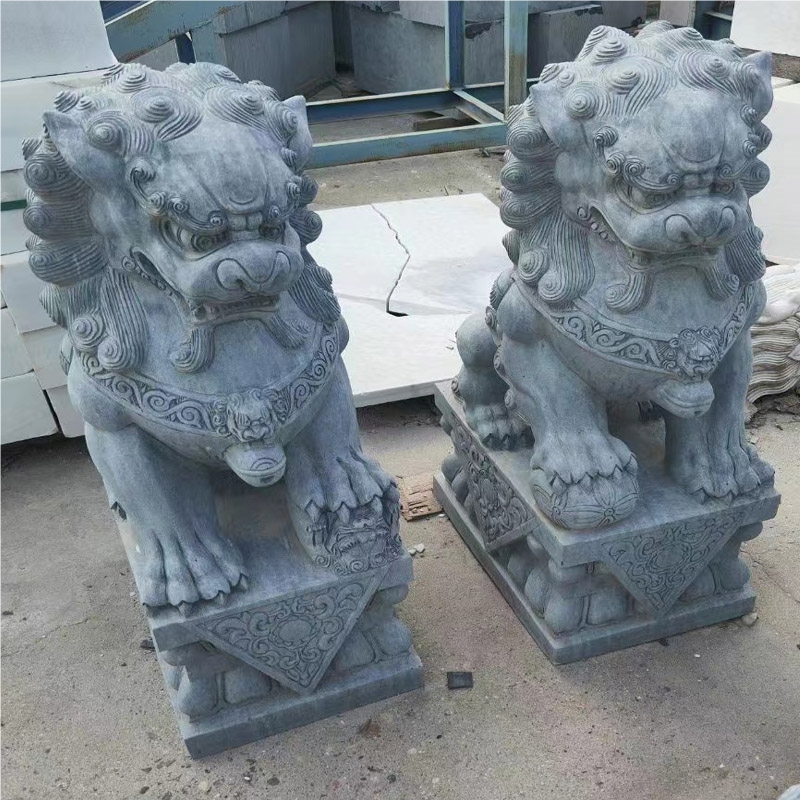granite, marble, limestone, travertine, slate, sculptures and carvings
| Grade | Size | Surface | Price |
|---|---|---|---|
| A | 80*65*40 cm | Polished | $500/Pieces |
Stone Name:
Blue - Limestone
Origin: China
China


 14YR
14YR

granite, marble, limestone, travertine, slate, sculptures and carvings

Other
Antique Chinese Style Temple Lion Sculpture For wholesale
|
3) |
Material |
marble |
|
4) |
Color |
as per request |
|
5) |
Regular size |
As per request ,(heigh:100cm ,150cm ,180cm,200cm ,240cm) |
|
6) |
Processing mode |
Hand carving , polished ,honed |
|
7) |
Surface finish |
polished ,honed |
|
8) |
Shape |
as per request |
|
9) |
Packing |
strong fumigated wooden crate |
|
10) |
Application |
Interior & exterior |
|
11) |
sample |
stone color sample is available |
|
12) |
Delivery time |
within 15 days |
|
13) |
Payment term |
T/T(30% deposit), L/C and other payment term after negotiation |
|
14) |
MOQ |
1 set |
|
15) |
Remarks
|
A leading manufacturer of all kinds of natural stone products in China, with our own 3 quarries and 5 production bases in the major stone areas in China,such as garden ornament, stone water fountain, stone table&bench, gazebo, flowerpot etc. If you are interested in our outdoor square decor large marble water fountain with lady statue or other products, please contact us freely. Thanks!
|
Lion statues have been used in decorative art for thousands of years. Some of the earliest known examples of lion statues date back to the ancient Mesopotamian cultures of Sumer and Akkad. These statues were often used to represent deities or to symbolize the power and authority of the king.
Lion statues were also popular in ancient Egypt, where they were often used to guard temples and tombs. The Egyptians believed that lions were powerful protectors of the dead, and they often placed lion statues at the entrances to their burial chambers.
In Greece and Rome, lion statues were often used to symbolize strength, courage, and victory. Lion statues were often placed in public spaces, such as plazas and temples.
In China, lion statues are known as "foo dogs" and are believed to have protective powers. Foo dog statues are often placed at the entrances of temples and palaces.
In India, lion statues are associated with the Hindu god Vishnu. Lion statues are often placed in Hindu temples and homes.
Throughout history, lion statues have been used to represent a variety of positive qualities, including strength, courage, protection, and leadership. These qualities have made lion statues popular choices for home decor for centuries.
Here are some specific examples of how lion statues have been used in different cultures throughout history:
The Lion Gate at Mycenae in Greece is a pair of lion statues that dates back to the 13th century BC. These statues are believed to have been placed at the entrance to the city to protect it from invaders.
The Lion of Knidos is a Greek statue of a lion that was created in the 4th century BC. This statue is considered to be one of the finest examples of Greek sculpture. It is now on display at the British Museum in London.
The Terracotta Warriors of Xi'an in China is a collection of over 8,000 terracotta soldiers that were buried with the first emperor of China, Qin Shi Huang, in the 3rd century BC. Among these soldiers are a number of lion statues that are believed to have been placed to protect the emperor in the afterlife.
